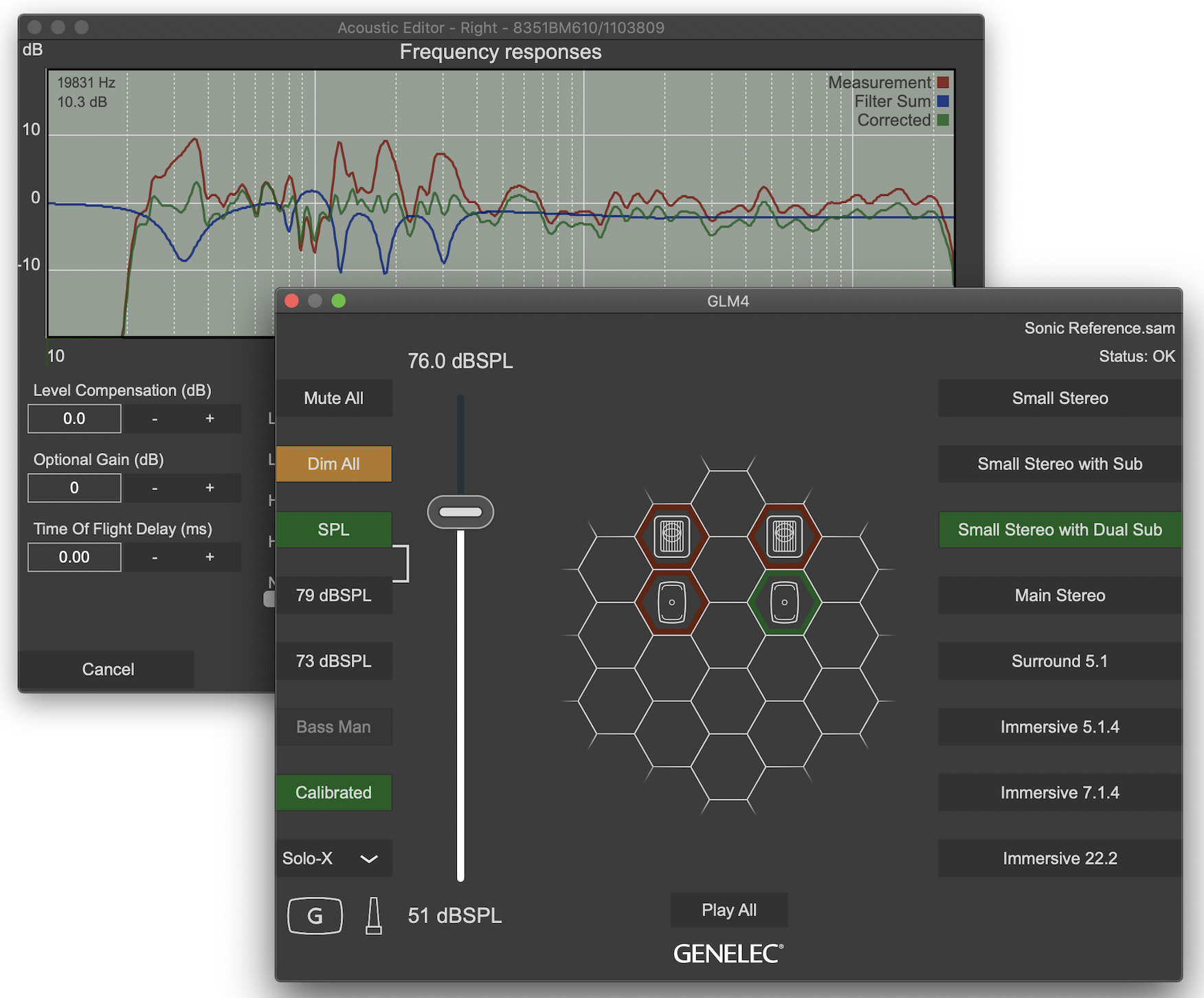Genelec has marked the 15th anniversary of its GLM loudspeaker management software with the launch of GLM 4.1, a significant upgrade that is compatible with all Genelec Smart Active Monitors and subwoofers.
The new update brings a raft of major new features and marks the introduction of the next generation AutoCal 2 automatic room calibration algorithm, which has been designed to deliver a more precise frequency response in a fraction of the time than was previously possible.
Based on data from thousands of real-world room calibrations, GLM 4.1 is built to offer the user control over a room’s detrimental acoustic aspects, enabling them to produce mixes that translate even more consistently to other rooms and playback systems. The GLM reference microphone kit allows room acoustics to be analysed, from which point each monitor and subwoofer can be automatically calibrated for relative level and relative distance delay, as well as subwoofer crossover phase and frequency response.
GLM 4.1’s new AutoCal 2 feature produces a faster and more accurate discrimination between direct and reflected sound and is complemented by a new 64 bit architecture and efficient code, rendering it a suitable tool for mobile engineers and content creators who regularly work on the go.
Meanwhile, for users of the 8331A, 8341A, 8351B and 8361A models from Genelec’s ‘The Ones’ series, GLM 4.1 is able to extend phase linearity down to 100Hz and time aligns all the monitors in a room, across types.
Other key features include a higher number of EQ filters, weighting refinements and a Solo-X mode for faster soloing of monitors when working with immersive content.
“The AutoCal calibration algorithm has always been the backbone of GLM,” said Genelec managing director Siamäk Naghian. “So I can think of no better way of celebrating GLM’s 15th anniversary than with the launch of AutoCal 2 as part of the new GLM 4.1 release. In those 15 years we have gradually seen intelligent loudspeaker calibration become universally recognised as the most reliable path to creating a true sonic reference – and we are proud to keep leading the way.”





